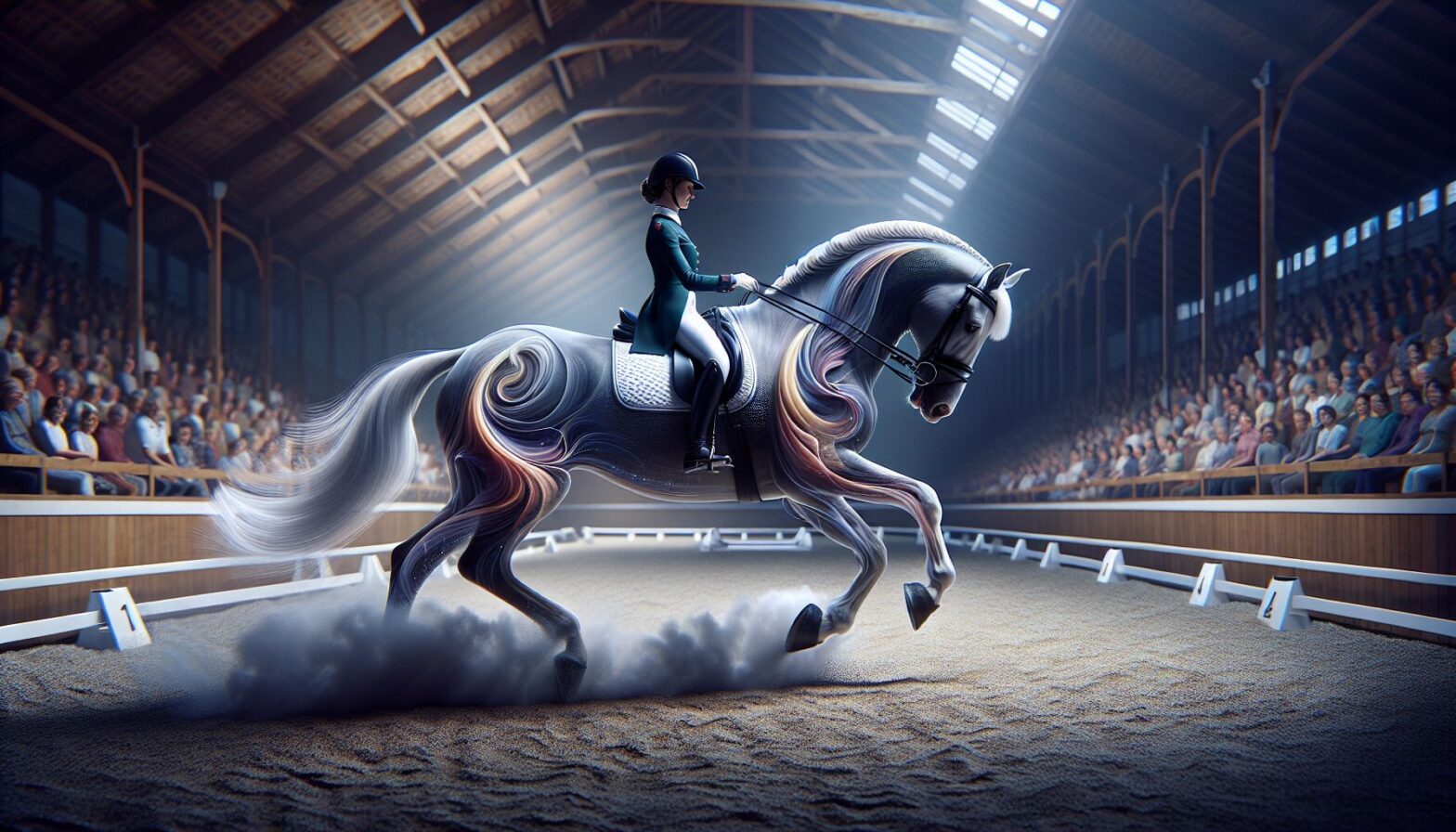Do you ever watch those majestic horse shows on TV and wonder how the riders make it look so easy? The truth is, it takes years of dedication and practice to master the art of dressage, a discipline that involves precise and graceful movements performed by horse and rider together.
So what exactly is dressage? In simple terms, it’s a form of horse training and competition where horse and rider work together to demonstrate a series of movements that showcase the horse’s balance, flexibility, and obedience. The word “dressage” comes from the French word for training, and that’s exactly what it is – a highly disciplined form of training that creates a harmonious partnership between horse and rider.
At its core, dressage is all about communication. The rider uses subtle cues and aids to ask the horse to perform specific movements, and the horse responds with grace and precision. It’s a dance of sorts, where both partners must be in sync in order to create a beautiful and seamless performance.
One of the key principles of dressage is the idea of “on the bit,” which refers to the horse’s acceptance of the rider’s contact through the reins. This is essential for communication between horse and rider, as it allows the rider to control the horse’s speed, direction, and balance with just a slight movement of the reins.
Another important aspect of dressage is collection, which involves the horse bringing its hindquarters underneath its body and rounding its back, creating a more compact and powerful frame. This not only looks impressive, but it also helps the horse to better engage its hind end and carry more weight on its hind legs, resulting in better balance and movement.
In addition to contact and collection, dressage also emphasizes the importance of impulsion, which refers to the horse’s forward energy and willingness to move freely and energetically. A horse with good impulsion is light on its feet, responsive to the rider’s aids, and able to perform with energy and enthusiasm.
Of course, mastering the art of dressage takes time and practice. Riders must develop a deep understanding of their horse’s body and movement, as well as a keen sense of timing and feel. They must also have patience and perseverance, as progress in dressage is often slow and incremental.
But the rewards of dressage are well worth the effort. Not only does it create a strong bond between horse and rider, but it also improves the horse’s strength, flexibility, and overall athleticism. Plus, there’s nothing quite like the feeling of executing a perfect half-pass or canter pirouette with your horse, knowing that you are both working together in perfect harmony.
So whether you’re a seasoned equestrian looking to take your riding to the next level or a beginner just starting out, consider giving dressage a try. It may seem daunting at first, but with dedication, patience, and a love for horses, you too can experience the joy and beauty of riding in harmony with your equine partner.
